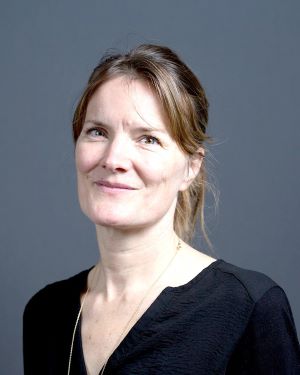Mette Ramsgaard Thomsen

Professor
Institute for Architecture and Technology, Royal Danish Academy
Research area: Digital design, computation, digital fabrication, information modelling, textile architecture, digital crafting
Contact: mette.thomsen@kglakademi.dk
What do you research?
My research centers on the intersections between architecture and new computational design processes. During the last 15 years, my focus has been on the profound changes that digital technologies instigate in the way architecture is thought, designed, and built. In 2005, I founded the Centre for IT and Architecture research group (CITA) at the Royal Danish Academy, Architecture, Design and Conservation. CITA has internationally leading expertise in advanced computational modelling and the building of novel extended digital chains between design, analysis, digital fabrication, and material specification. Over the last 5 years, our focus has been on innovating computational design methods for bio-based materials for sustainable construction.
Why is it so important?
Digitization is changing our practices in profound manners that rupture the way we communicate, design, and build our environments. The ground research we perform challenges both the way we understand what buildings can do, how they perform, and what they are made of, as well as the technological foundations of architecture. In architecture, as in all modes of cultural production, it is important to tie creativity and critical reflection to technological development, challenging a perception of technology as something we use to one of active co-creation.
A project you are proud of?
In 2019-23, I was General Reporter and Head of Science Track for the UIA2023 CPH world congress “Sustainable Futures – Leave no one behind”, asking how architecture can contribute to the UN SDGs to investigate, showcase, and argue for how change can be imagined across the built environment. The Science Track sought to build the knowledge foundation of the world congress. With a total of 296 papers from all over the world, we created a wide-ranging international community in research and practice around the UIA2023CPH agenda. This is a cross-siloed architectural community presenting action-driven work on how to change architectural practice in support of the SDGs. The project made the 17 UN SDGs accessible and operational for architectural practice and research while identifying a model to expand notions of architectural knowledge production, capturing and communicating the breadth of knowledge cultures in architecture.
Updated December 2024
In previous policy fellowships, Mette has worked with Sara Krüger Falk, Director, UN Global Compact Network Denmark (Alumner - Policy Fellowship).
